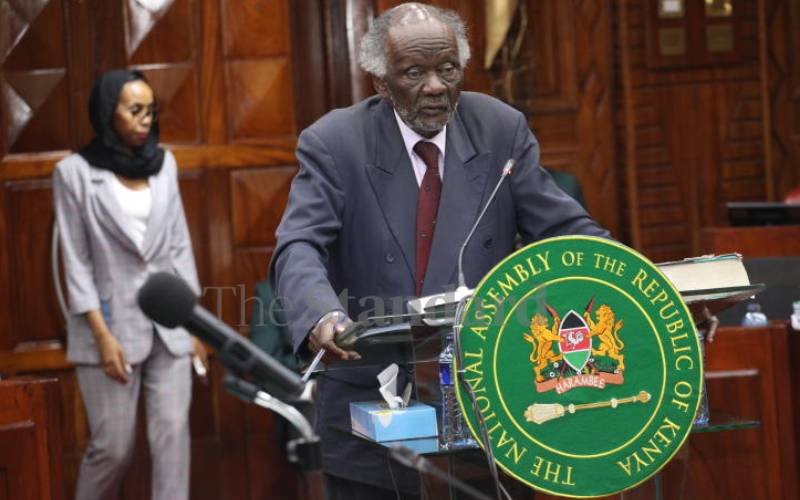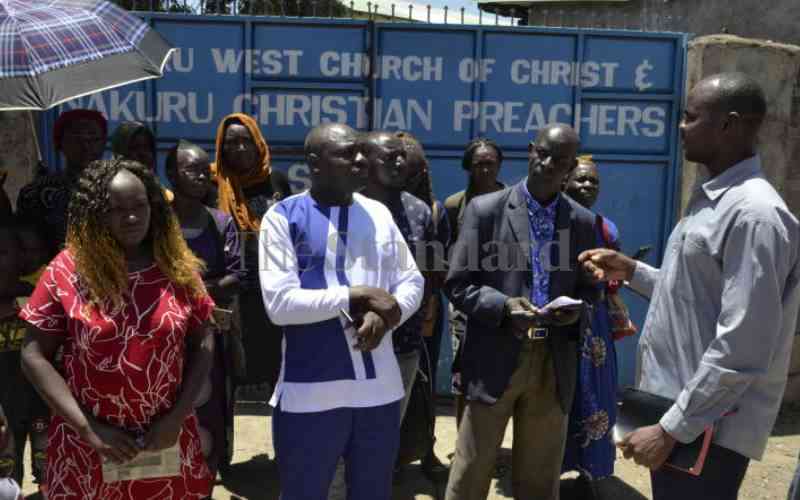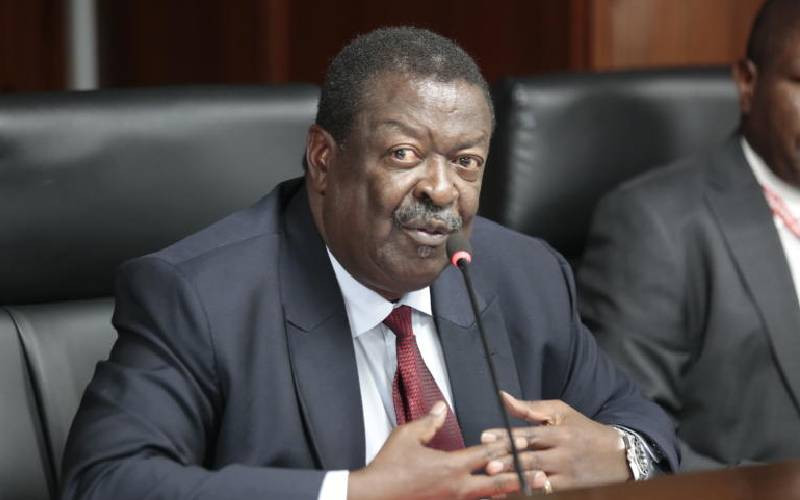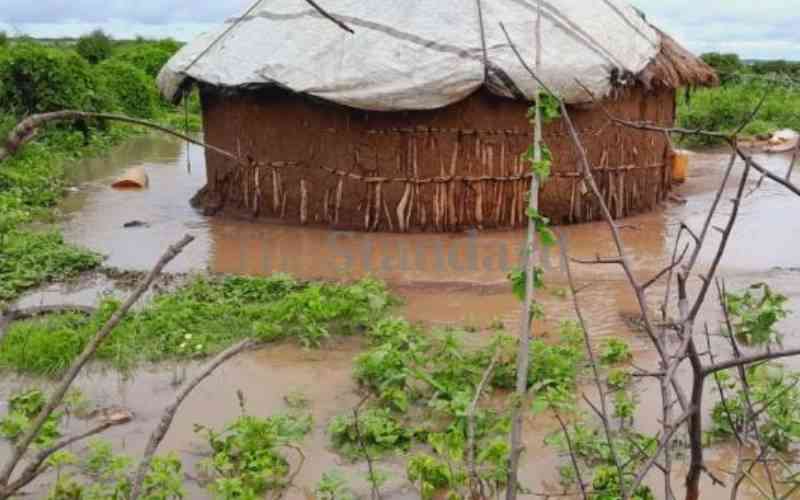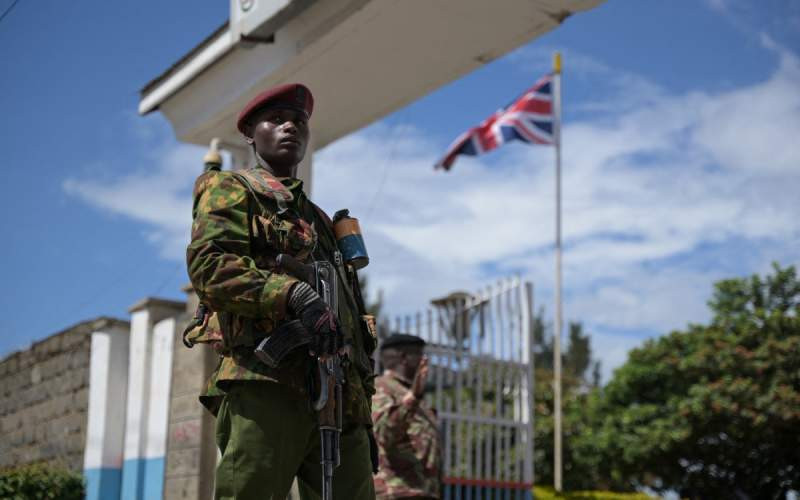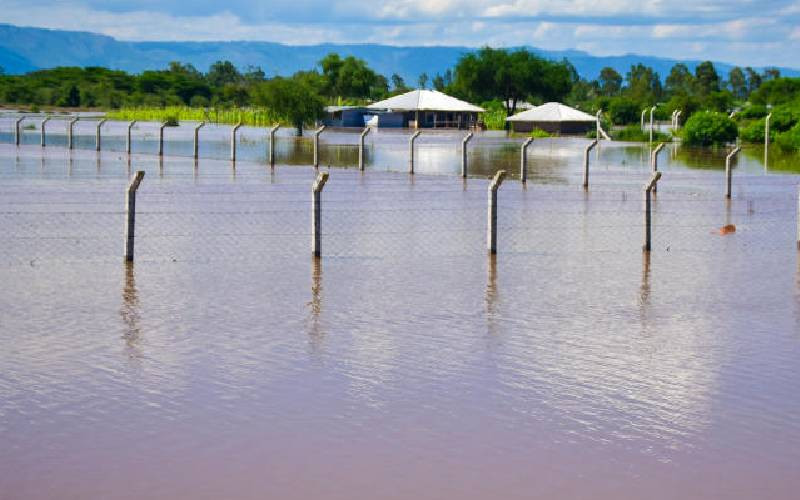
Survivors recall the chilling events of Monday, April 29, when an almighty gush of water came crashing into a Maai Mahiu village, flattening houses and killing people and livestock.
The first images that reached the media were of a dead cow in a pile of debris, and a car tucked in a labyrinth of tree branches nearby. All around, panicked locals rummage through whatever they can move.
This catastrophe compounded the floods that have hit Kenya over the past three weeks.
The warnings came early. In July 2023, the Kenya Meteorological Department notified Kenyans to expect flooding.
“Based on model predictions and expert assessment, there is a high likelihood (approximately 90 per chance) of El Nino to prevail during the remaining part of the year and may extend into early 2024,” the department said.
Initially, key figures in government played down this warning. Then the floods came and a blame game began, attracting even the attention of international leaders.
“I am spiritually close to the people of Kenya at this time when a severe flood has claimed many lives and destroyed vast areas. Let us pray together for all those who suffer the effects of this natural disaster,” Catholic head, Pope Francis wrote last week.
- Sh10 billion disbursed as 38 counties hit alarm stage in El Nino disaster
- Dozens of cholera cases reported in flood-hit Kenya
- 17 cases of diarrhoea reported in Kilifi IDP camp
- Indian naval ship docks with relief food and medicine
Keep Reading
As if to give Kenya a second chance to heed the warning that had been largely ignored, the rains subsided in the new year. In April, however, they returned with unprecedented fierceness.
The devastation is depressing. Floods and landslides across Kenya have killed 181 people since March, according to the Red Cross. On social platforms, furious Kenyans are blaming the government for its perceived ill-preparedness.
But is that really the case?
Kenya has had its fair share of disasters this year. The country is just emerging from a worrying spate of road accidents; in the first one and a half months of the year, 649 people lost their lives on the road, according to statistics from the National Transport and Safety Authority (NTSA).
Natural tragedies have also been utterly destructive. The past five years have been particularly devastating.
There was a cholera outbreak in January 2019, an epidemic that took months to contain. Then came a locust infestation in October 2019, one of the biggest locust plagues to hit the Horn of Africa in 70 years.
This infestation threatened livelihoods as any little greenery in Kenya’s semi-arid areas was quickly devoured, at a time when the country was experiencing severe drought. In October of that same year, Kenya experienced floods and landslides, a situation that repeated in April 2020.
In May 2021, Kenya was battling a dengue outbreak. Another round of floods hit in April 2021, before yellow fever and chikungunya outbreaks of January 2022. There followed a cholera outbreak in October 2022, before a series of floods in March 2023, October 2023, and April 2024.
While most of these were largely unpreventable, the country’s preparedness has been questioned. As most of these challenges came, Kenya was grappling with the Covid-19 pandemic, and the transition in government; elections were in August 2022. The attention was divided, resources scarce and many were overwhelmed.
Ken Gichinga, the Chief Economist at Mentoria Economics, says that better and deliberate, funding of relevant institutions can help deal with catastrophes efficiently.
“Disaster management is best handled by the county governments. The national government ought to provide additional support in areas that are beyond county capacity. The challenge though is counties have not been properly resourced both financially and capacity-wise. This is at the heart of the problem,” he says.
Jackson Koimbori, the Senior Circular Economy and Climate Change Coordinator at Kenya Private Sector Alliance (Kepsa), thinks that Kenyans are greatly culpable for the current issue of flooding.
“The flooding crisis in Kenya is a multifaceted issue exacerbated by various human interventions. Deforestation, particularly in riparian areas and watersheds, has significantly reduced the natural buffering capacity of ecosystems against heavy rainfall. Additionally, unplanned urbanization and poor land-use practices have led to the encroachment of settlements into flood-prone areas, increasing vulnerability to inundation. Furthermore, inadequate infrastructure such as poorly constructed drainage systems and inadequate waste management exacerbate the impacts of flooding, leading to loss of lives, displacement, and property damage,” Dr Koimbori says.
In appreciation of the fact that we are causing self-harm, do we have policies in place to counter similar future actions and to reverse the damage done, or do we simply take a gamble with it?
“Kenya does have policies and frameworks in place to address disaster risk reduction and climate change adaptation, such as the National Disaster Risk Reduction Policy and the Climate Change Act,” Koimbori notes.
“However, implementation gaps, inadequate enforcement and limited resources have hindered their effectiveness.
Additionally, rapid urbanisation and population growth have outpaced the capacity of existing infrastructure and governance systems to cope with increasing climate-related risks.
Strengthening institutional capacity, enhancing coordination among relevant stakeholders, and allocating sufficient resources are essential to ensure the successful implementation of existing policies and strategies.”
Influential figures have been calling out the government for its perceived lack of commitment to swiftly address the floods, with political jabs thrown.
Following repeated orders for Kenyans in lowlands to relocate to higher ground, former Prime Minister Raila Odinga faulted the government, on Thursday saying: “They knew the rains would increase but they did not take any action, now they are telling Kenyans to go to higher ground and climb hills. Where are the hills?”
“The reason the government has not declared the ongoing floods a national disaster is because his (President William Ruto’s) government is financially bankrupt,” politician Jimi Wanjigi wrote on X.
“The gross mishandling of the devastating floods has only confirmed that he has reached his dead end.”
Institute of Economics Affairs Chief Executive Kwame Owino, on X, called out those using the floods to champion for the government’s affordable housing.
“Folks, how does a sane being say that affordable housing is the cure for government failure in flood management when people who afforded their own homes decades back are swimming inside their houses? What is our national IQ again?” he asked.
Amidst all the push and pull between proponents and opponents of the government’s response, what can Kenya do to be ready to battle the next natural disaster?
“Both short-term and long-term interventions are crucial. In the short term, emergency response measures such as improved disaster preparedness, early warning systems, and efficient evacuation plans can help mitigate the immediate impacts of flooding.
“Additionally, investing in infrastructure upgrades, including robust drainage systems and floodplain management, can enhance resilience to future flooding. In the long-term, sustainable land-use planning, afforestation initiatives, and community-based adaptation strategies can help reduce the risk of flooding and build resilience to climate change-induced hazards,” says Koimbori.
He advocates for citizens to take responsibility and take action in good time to prevent loss of lives and property whenever disaster strikes.
“For Kenyans facing the impacts of flooding, I would emphasize the importance of preparedness and resilience. Communities should prioritise early warning systems, evacuation planning, and sustainable land management practices to reduce vulnerability to flooding.
“To lawmakers, I urge the prioritisation of investments in resilient infrastructure, effective land-use planning, and ecosystem restoration initiatives. Moreover, policy coherence, stakeholder engagement, and long-term planning are critical to addressing the root causes of flooding and building a more resilient future for all Kenyans.”
Mr Gichinga is adamant that more funding will inspire better preparedness, calling for “sharpening of the revenue collection of counties and building capacity for disaster management”.
“More needs to be done to increase allocations. Counties also need to improve revenue collection. Some of the disaster-hit areas are in freehold areas and make no payments to the county government. This also limits the effectiveness of the county government.”
He says that the government could lose credit due to unease around its handling of floods and other natural disasters around it.
Asked if the government consults experts enough on how to handle and alleviate disasters his answer was no.
“The country’s brain trust is not fully exploited in planning and strategy.”
Kenya Meteorological Department Director General David Gikungu recently, in a media interview, asked people to keep vigilant.
“Keep safe. We are expecting that rainfall will continue throughout the month but at varying degrees depending on where you are,” he said.
With no assurances that these disasters are coming to an end, Kenya will need to up its game and be proactive rather than reactive.
 The Standard Group Plc is a multi-media organization with investments in media platforms spanning newspaper print
operations, television, radio broadcasting, digital and online services. The Standard Group is recognized as a
leading multi-media house in Kenya with a key influence in matters of national and international interest.
The Standard Group Plc is a multi-media organization with investments in media platforms spanning newspaper print
operations, television, radio broadcasting, digital and online services. The Standard Group is recognized as a
leading multi-media house in Kenya with a key influence in matters of national and international interest.

